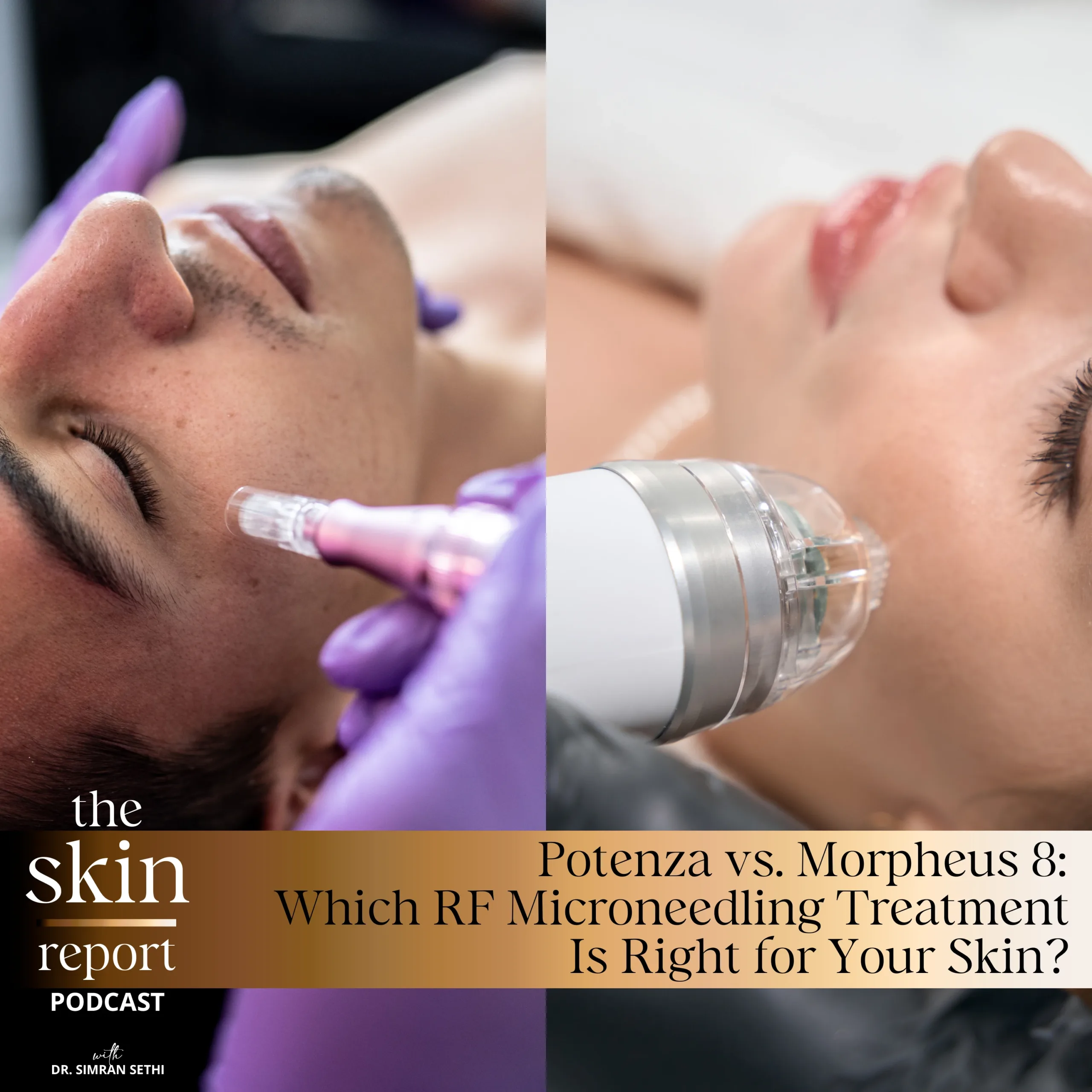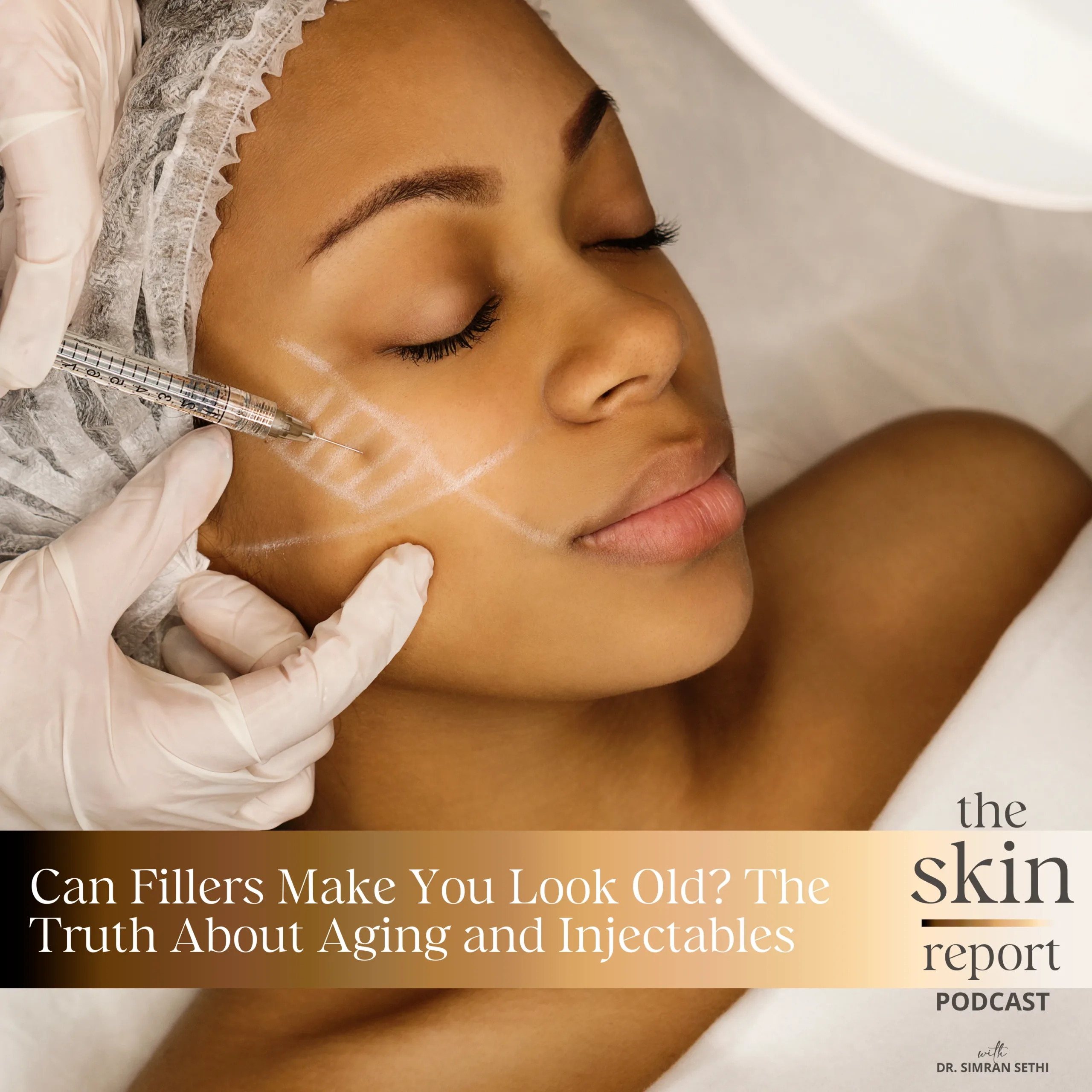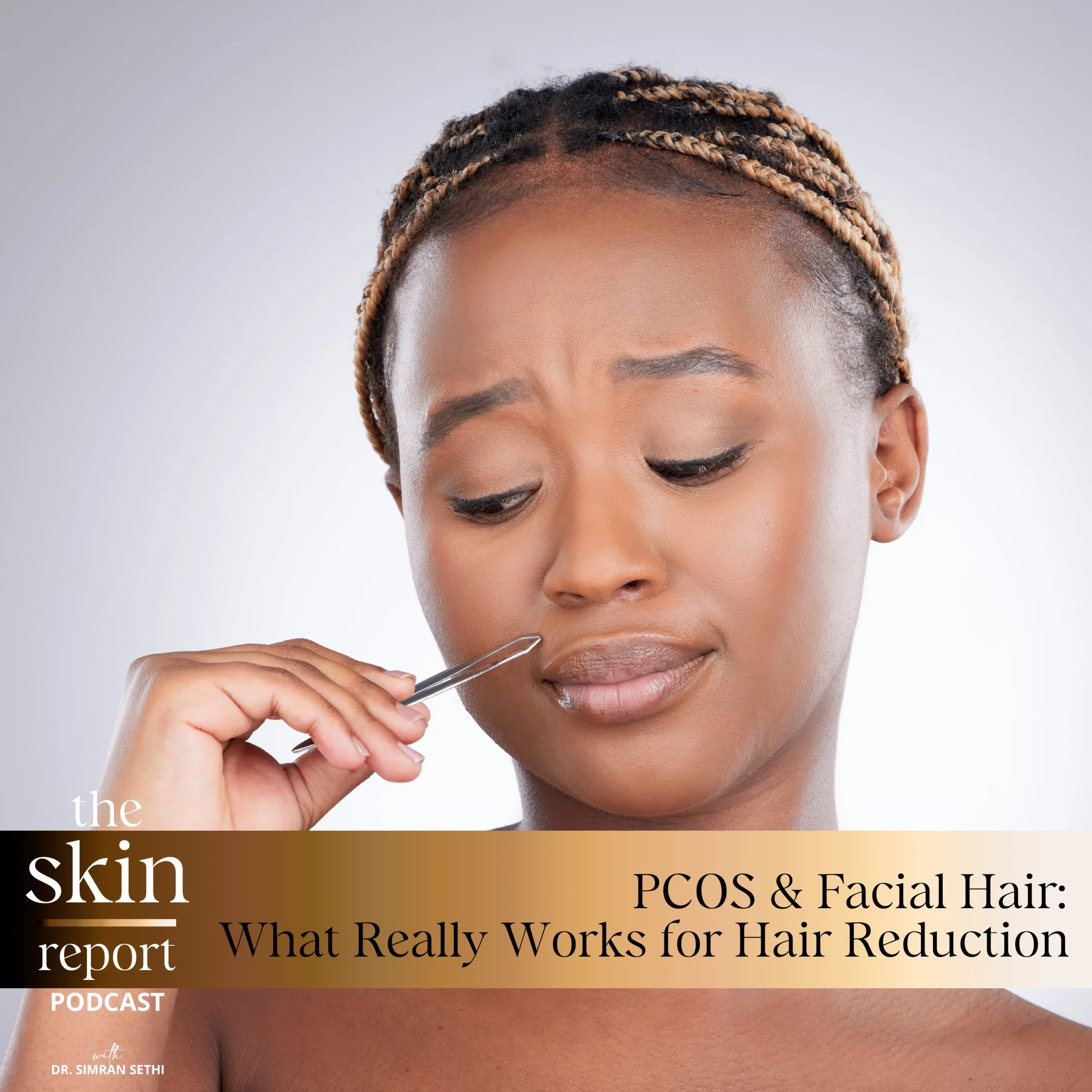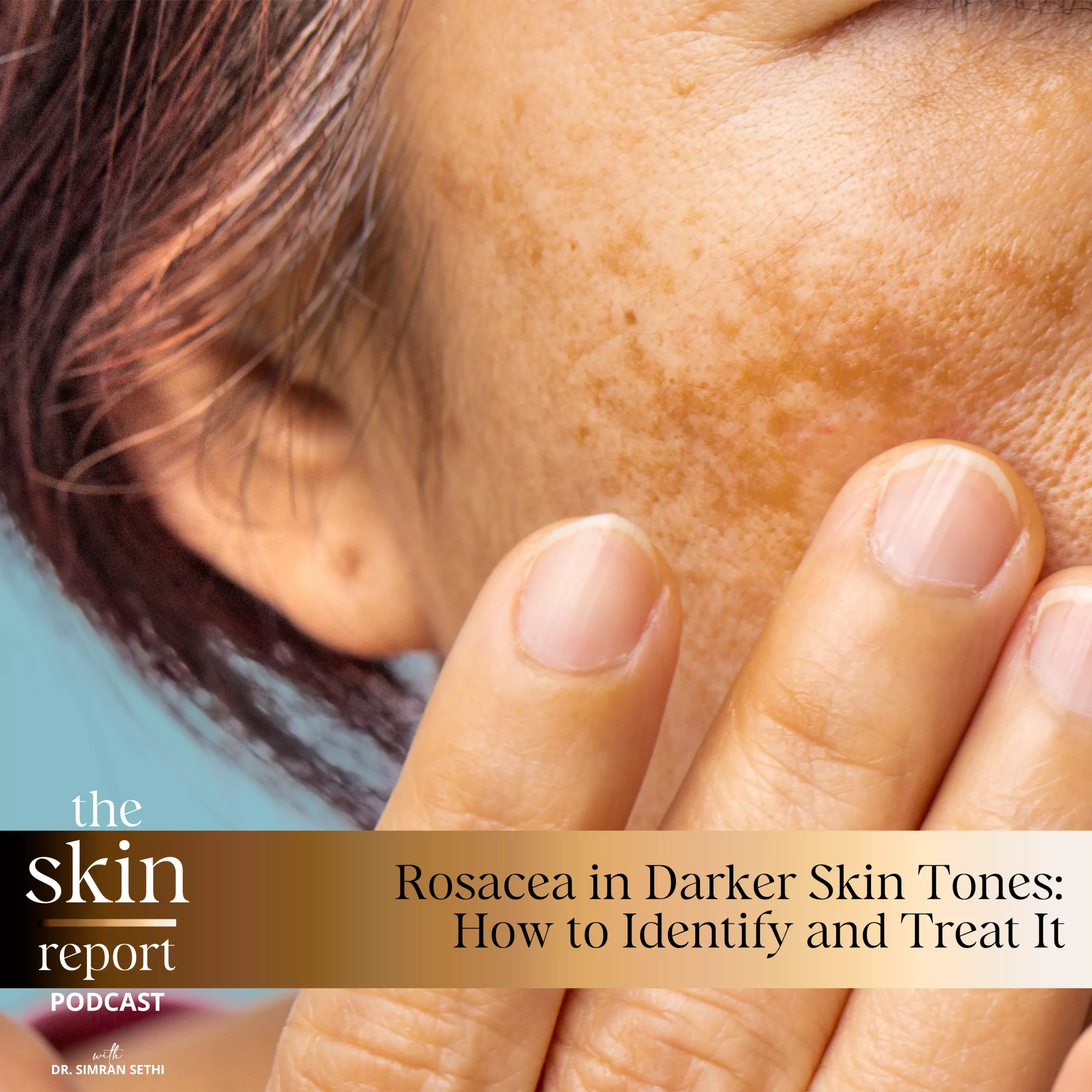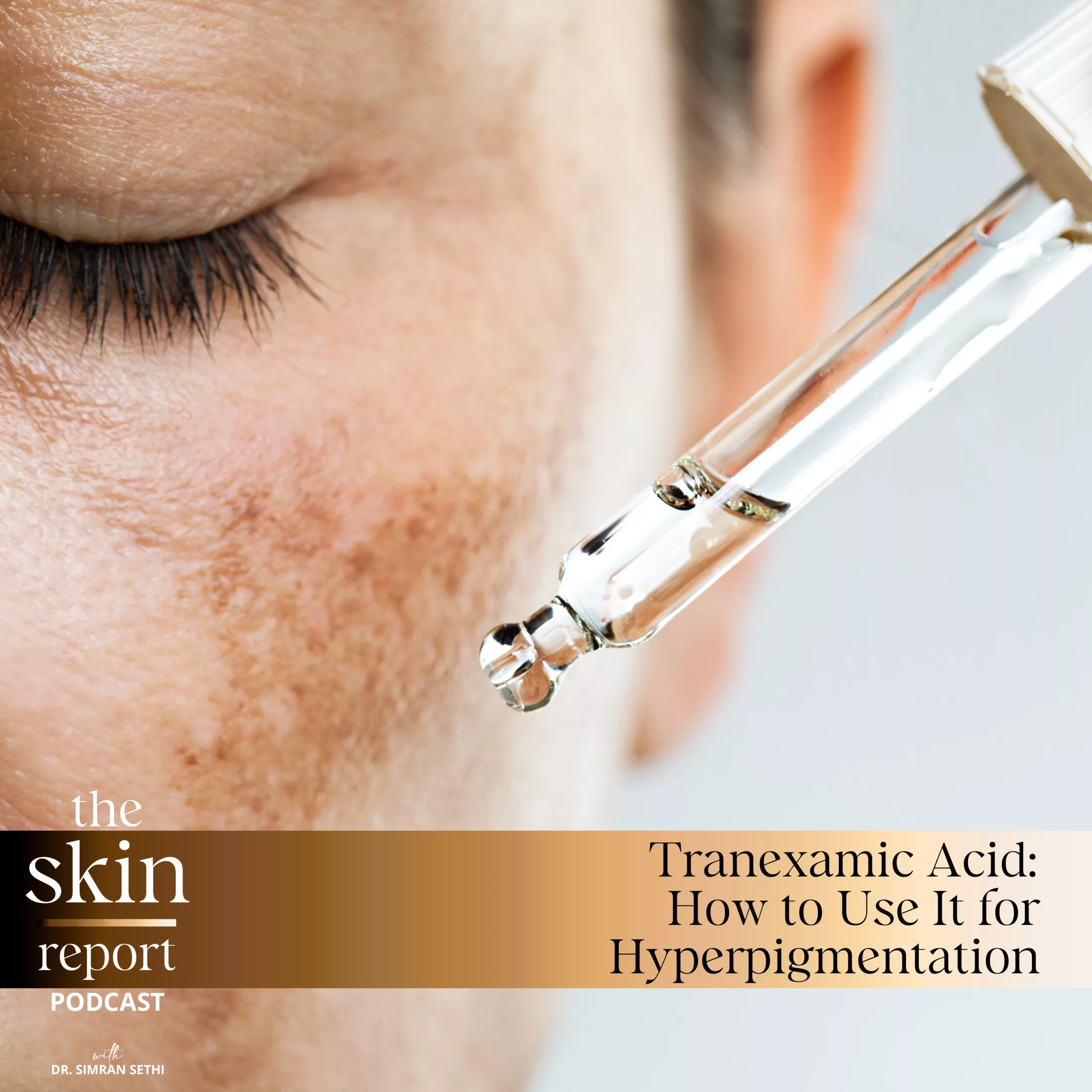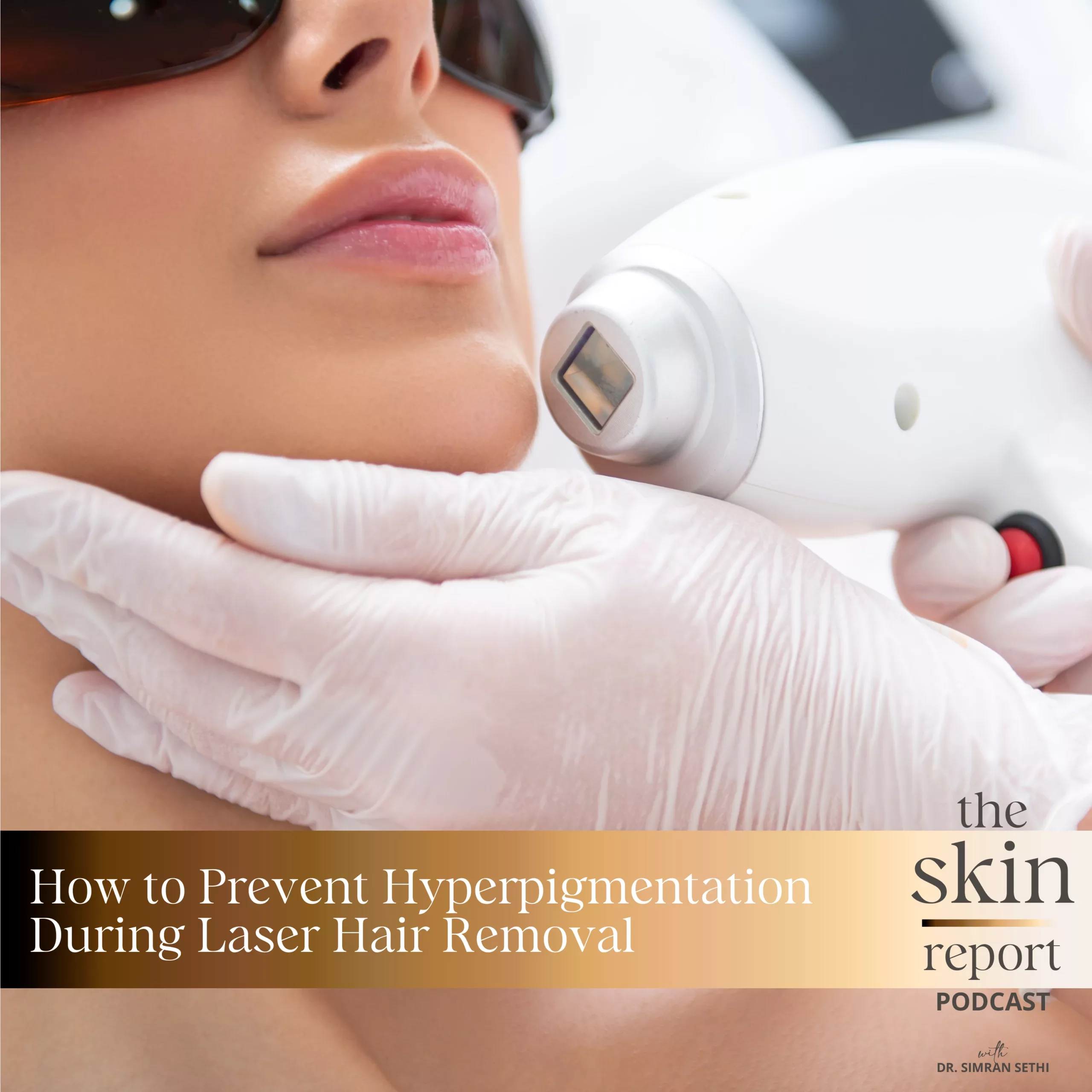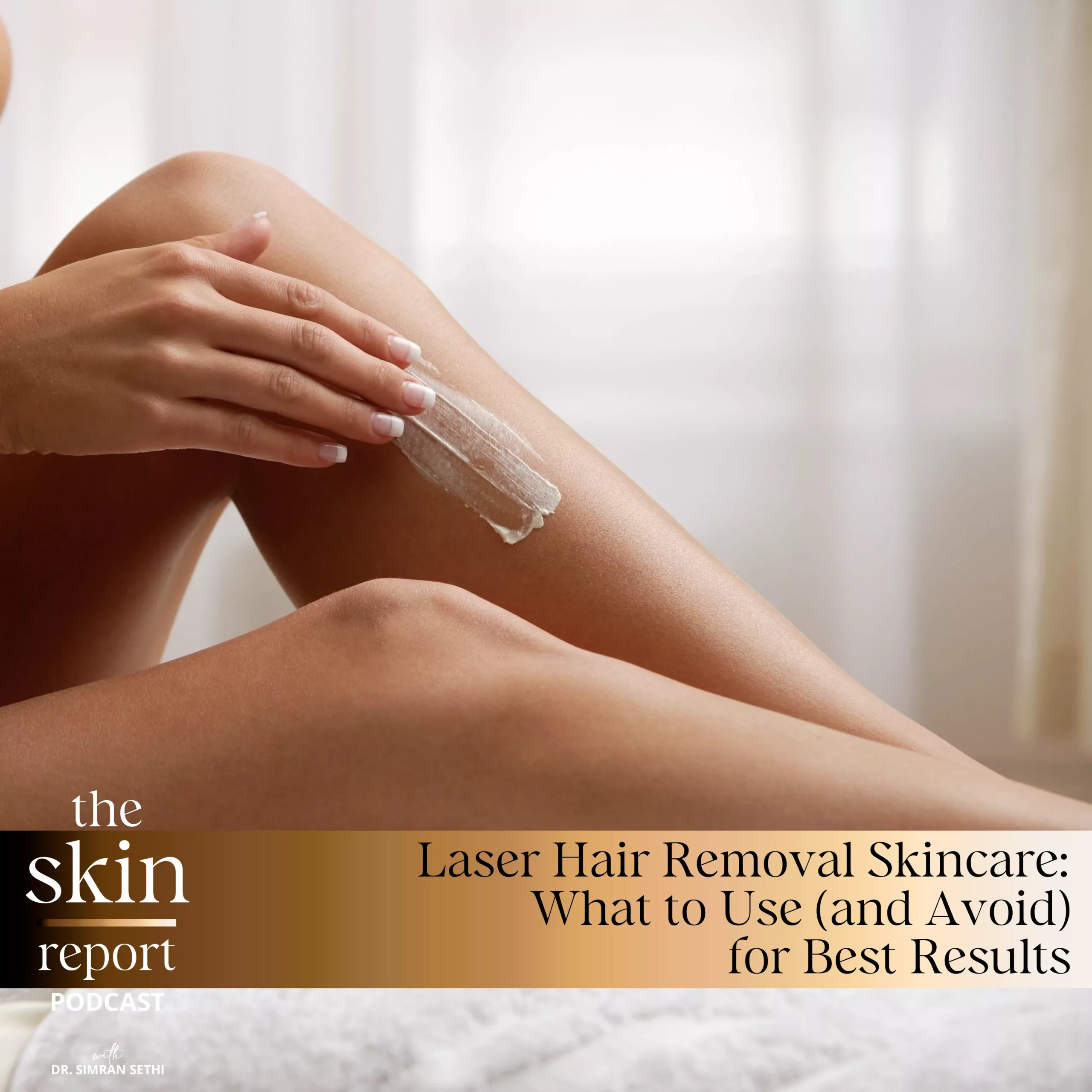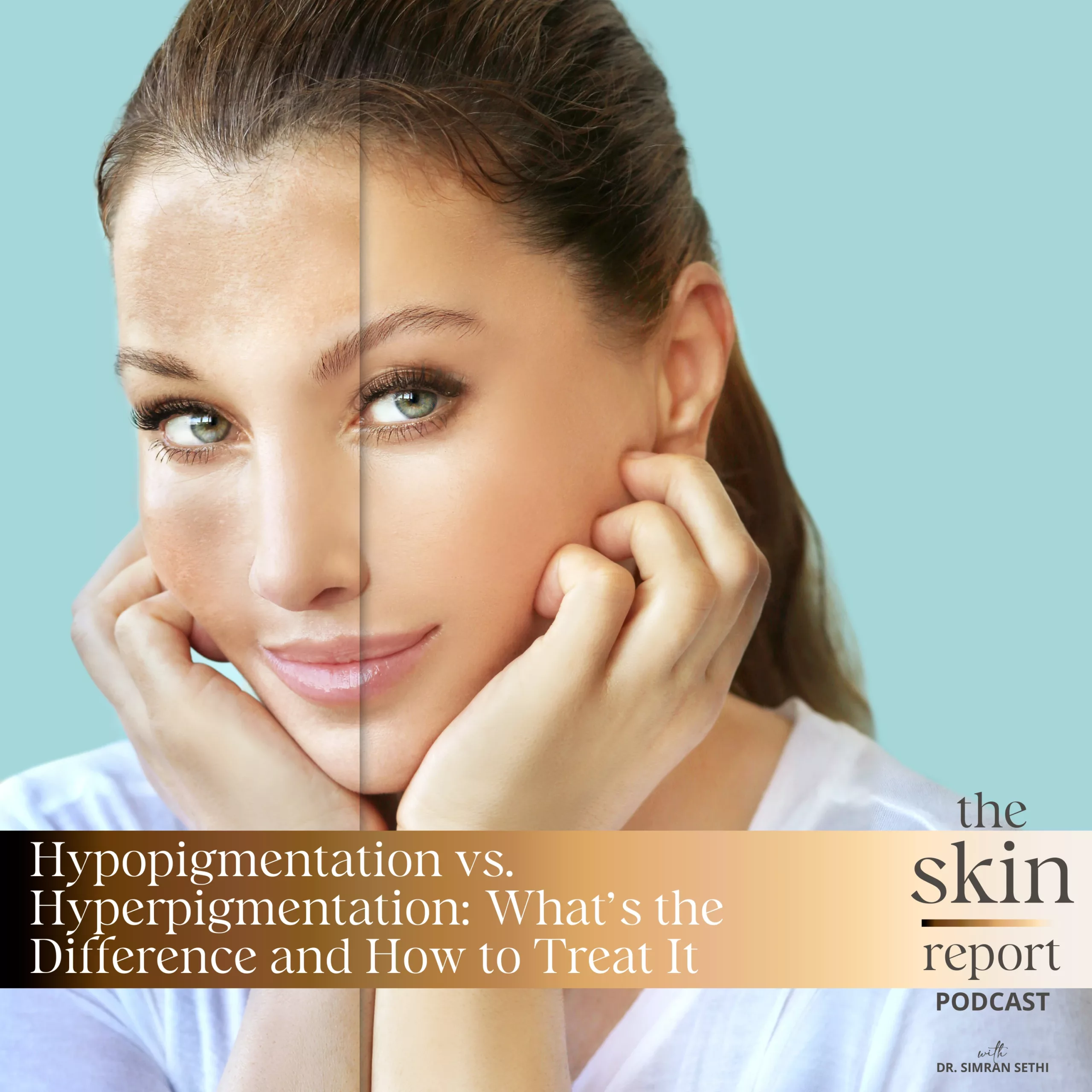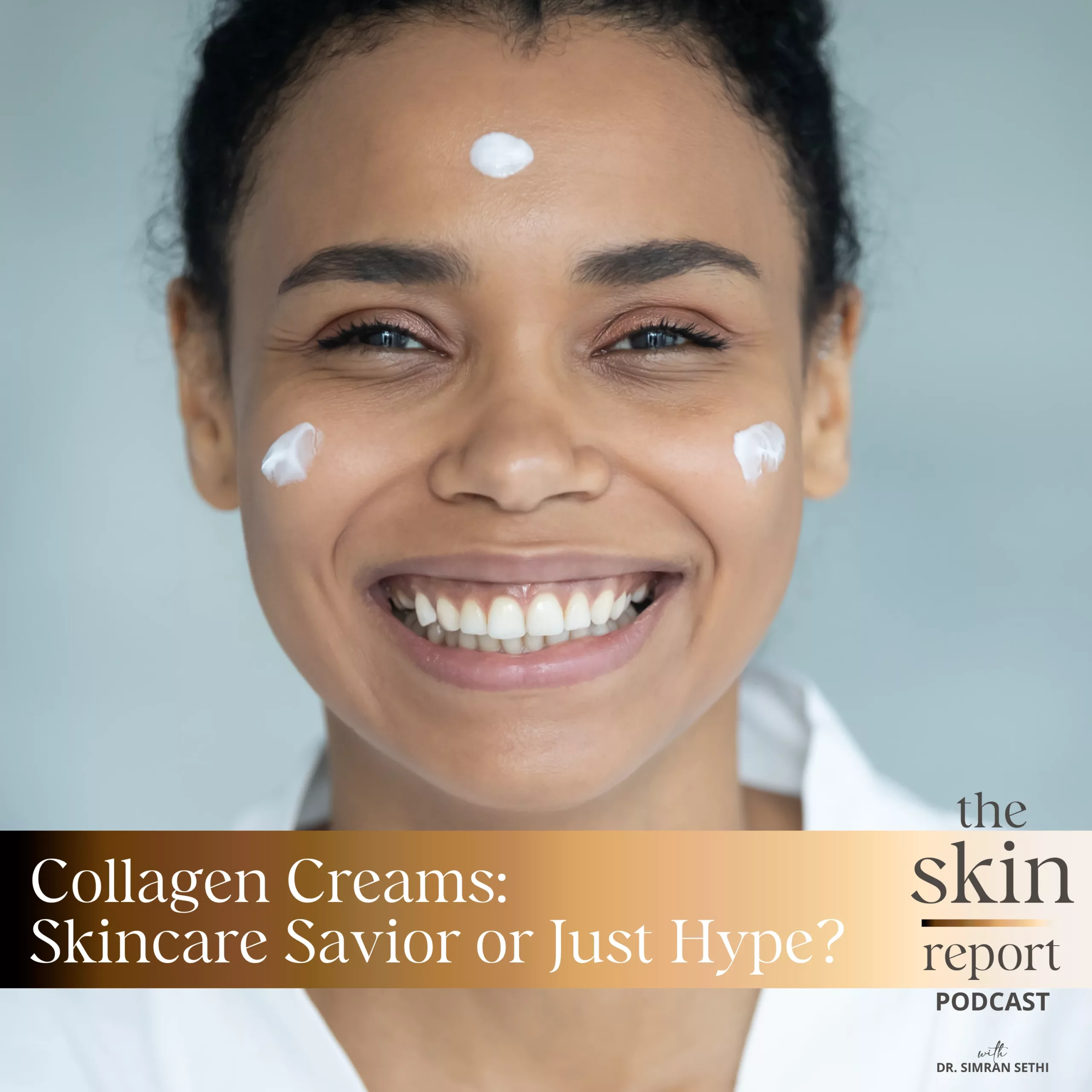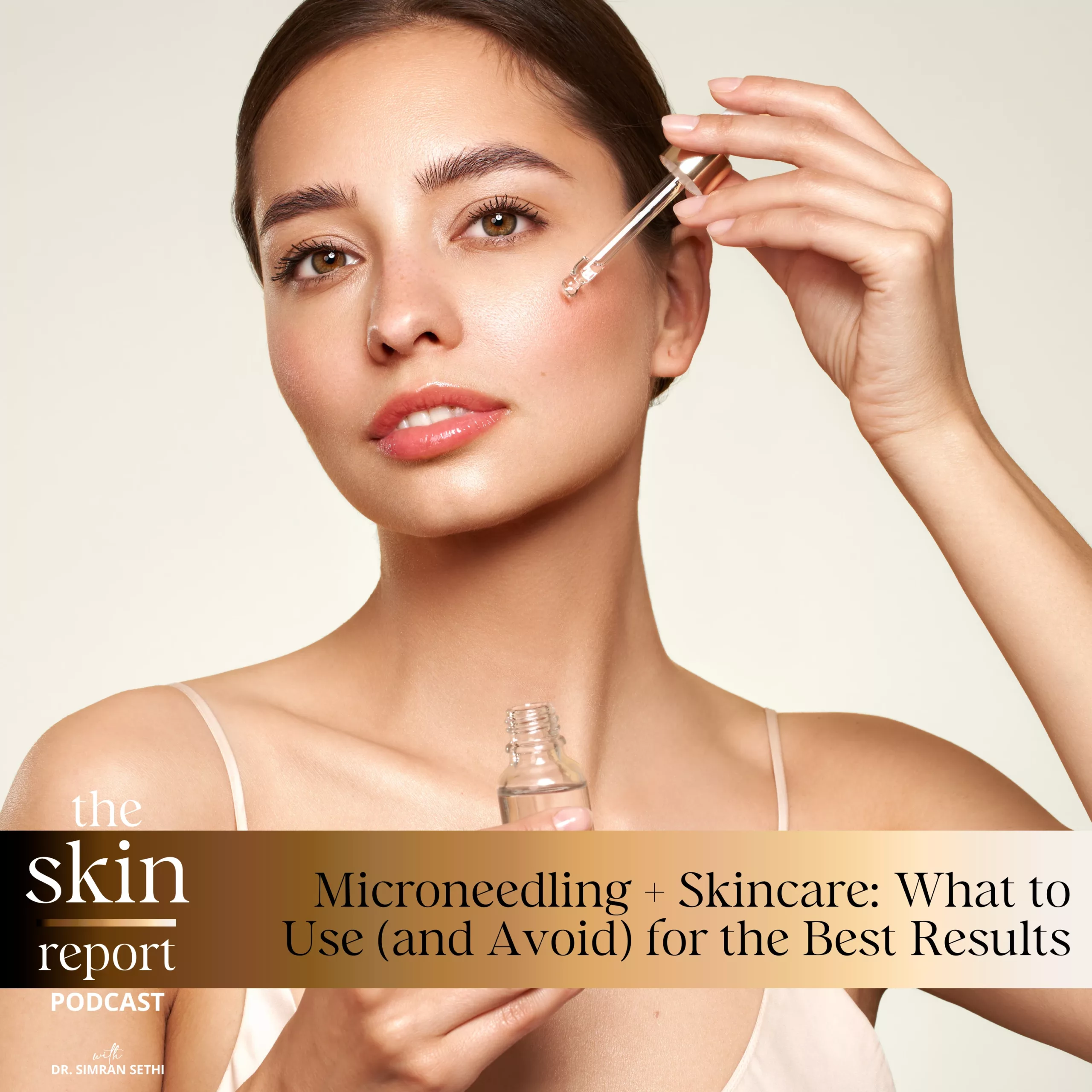Hello everyone, and welcome back to The Skin Report. A lot of you have been asking recently about cortisol face, so today we’re going to cover what is cortisol face, what causes it, how to prevent it, and later on is cortisol face serious? I’m Dr. Simran Sethi. I’m a board certified internal medicine doctor who specializes in medical aesthetics. Let’s get started.
So cortisol face has been trending recently and I think it’s a term that I find very confusing because I know that cortisol face is actually something that is caused by a medical condition called Cushing’s syndrome, which essentially is a syndrome where your body is making excess cortisol because there’s a dysfunction in your adrenal glands that secrete cortisol. Now, when people have Cushing’s syndrome and they have excess cortisol, they will over time develop a round face that looks a little puffy. And I think that now people are starting to refer to this sort of puffiness or roundness in the face as cortisol face, but because its name is a little misleading, it makes people believe also that if they have this puffiness, that they may have a cortisol disorder.
So first of all, when we’re thinking of this sort of lay term cortisol face that’s trending, I want you to remember that this does not mean that you have Cushing’s syndrome or excess cortisol or you need to panic and get your cortisol levels tested. It’s referring to sort of a puffiness in the face that is caused by other things.
So let’s go into what things can cause this facial puffiness.
Number one, excess salt intake. So salt helps your body hold onto more water. If you are holding onto more water, you will naturally develop a little bit of swelling or puffiness in your face. And that can be mild and usually when we wake up, we tend to have a little more water in our system. So we tend to be a little more swollen in the morning first thing. Or it can be more severe. And if you do have facial puffiness that’s more severe, likely there is something else going on and you probably want to consider talking to your physician.
The other cause of facial puffiness could be an allergic reaction to something and it may not be very obvious to you because sometimes if you’re using certain skin care products or eating certain things and you’re allergic to them, you may have a delayed onset of a reaction. So don’t ignore that if you find that over a course of a few weeks your face is getting puffier. And then finally, cortisol face could also refer to people who’ve had too many fillers put in their face over time. I use fillers in my practice. They’re an excellent solution for certain things if done elegantly, if done conservatively and done properly. But you all know there are people, especially certain celebrities, who maybe have gone a little overboard and their face starts looking puffier. So excess filler use can also cause this cortisol face.
Next, let’s get into how do you prevent cortisol face? So as we talked about earlier, there are so many different causes of this cortisol face and preventing it would mean that you would address the causes. So first and foremost, if you tend to find that your face gets a little puffy because you’ve had a very high salt meal, maybe reducing salt intake. The other thing is addressing the type of skincare you’re using, and that would be in the case of allergies. Clearly, if you are allergic to something, you will stop using it. There’s not really a preventative one way to address cortisol face because it is sort of a misnomer for just a puffier face.
So now let’s go into how do you prevent cortisol face? So we already talked about what kinds of things could lead to this facial swelling. And the first and easy one is avoid high salt foods that will make you hold onto more water. Allergies, clearly, you know that you would have to identify what you’re allergic to, stop using it. But then I’ll talk a little bit about fillers and this puffy face. If somebody has a face that is looking puffier or overfilled, there are a few solutions and of course fillers can be dissolved. Sometimes you are not able to dissolve all your filler.
And then most importantly, how do you prevent getting overfilled with fillers? And that comes down to making sure that you’re getting aesthetic work done by someone who is licensed, trained and also has a certain style. When you go to an aesthetic provider, I think a good rule of thumb is look at the style of work done on them, on their employees in the office. And most importantly, when people are aging, they tend to lose volume and all of that volume doesn’t have to be restored with fillers. It can be restored and improved with collagen production. And there are ways to do that with products like Sculptra, microneedling with radio frequency, all therapy. Those are longer discussions, but overall fillers can be used. But to prevent cortisol face from over-usage of fillers, go to somebody who has a multitude of solutions for you so that they use the right ones.
Finally, is cortisol face dangerous? A cortisol face is actually a misnomer. If somebody had actual cortisol excess, they are going to have a lot of symptoms that will point to this cortisol excess before they actually develop that facial swelling and cortisol face. So is cortisol face dangerous? Not really, because in the realm of what we talked about today, it doesn’t actually mean you have high cortisol. If you have Cushing’s syndrome or any kind of medical condition that would cause you to have a swollen facial appearance, likely you will have many, many other very, very obvious symptoms before you even get to that point. So cortisol face for that reason is not dangerous.
If you enjoyed this conversation or any of our content, please leave us a review and don’t hesitate to ask questions or give us recommendations on other kinds of content you would like to hear about in the comments. And don’t forget to subscribe and turn on the notifications so you know whenever we release new content.


